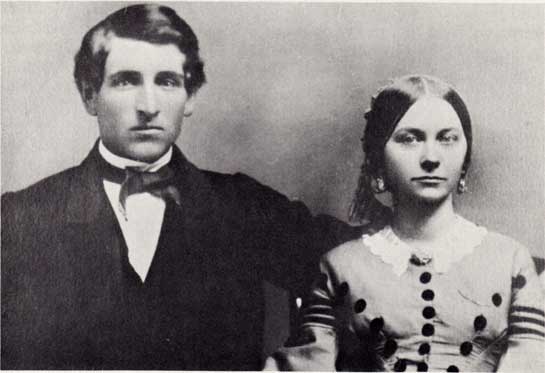“Lindus, I do not know how much show I have for heaven, but I
know I have the Greatest Show on Earth”.
By praising my parents and our antecedents for their devout
ways, I do not wish to demean the contribution which Colonel Cody
made to the “Opening of the West” to settlers, his Pony Express, his
work of bringing in buffalo meat to feed the army of immigrants who
laid the tracks and rails for the first transcontinental railroad. But I
must say here that in my opinion, Colonel Cody’s father, Isaac, was
a greater man in his way than his son. He was determined to save
Iowa and later Kansas territories for the Lincoln party. “The Union”,
as it was called. He brought in immigrants to settle in tents and huts
on his own acres so as to get their votes for Lincoln. His enemies
pursued him constantly to take his life. His early death was due to
hiding in wet cornfields and secret hiding places while his wife and
children explained to the groups of men who came for him, “he
is away and nowhere near.”
Julia, Buffalo Bill’s sister, lived in our home for many months
and told of one time when their father was in hiding near the house,
how the girls all put on heavy boots and went stamping around up-
stairs while the mother explained to their father’s enemies, that
friends of Isaac were upstairs, having arrived to protect them. Julia
told us many stories of the early days. After her father’s death,
she went to visit cousins in Iowa. Lincoln was there to speak and
some one told him of Isaac Cody’s daughter being in the area. He
sent for her to come. Julia proudly related how the cousins out-
fitted her in their best garments so she would have a nice appear-
ance before President-Elect Lincoln. He praised her father before
all the audience, speaking of the family’s work to hold Kansas to
the Union and to help abolish slavery. Julia said, “then he hugged
me”. She was proud of her father—a Cody who had been concern-
d in his own way with the needs of his country—was he not among
the concerned Cody’s?
In our family, we had family morning prayers when the Bible
was read aloud. “Go ye unto all the world and preach the gospel
to all the people,” and “God so loved the world that he gave his
only begotten Son" were verses which rang in our minds as children.
My father, Lindus Cody, established, or helped generously in estab-
lishing, seven churches in his lifetime.
Many people have written that they watched members of
this devout Cody family over the years and absorbed, perhaps un-
consciously, the spirit and essence of their lives. One grandson
6.

